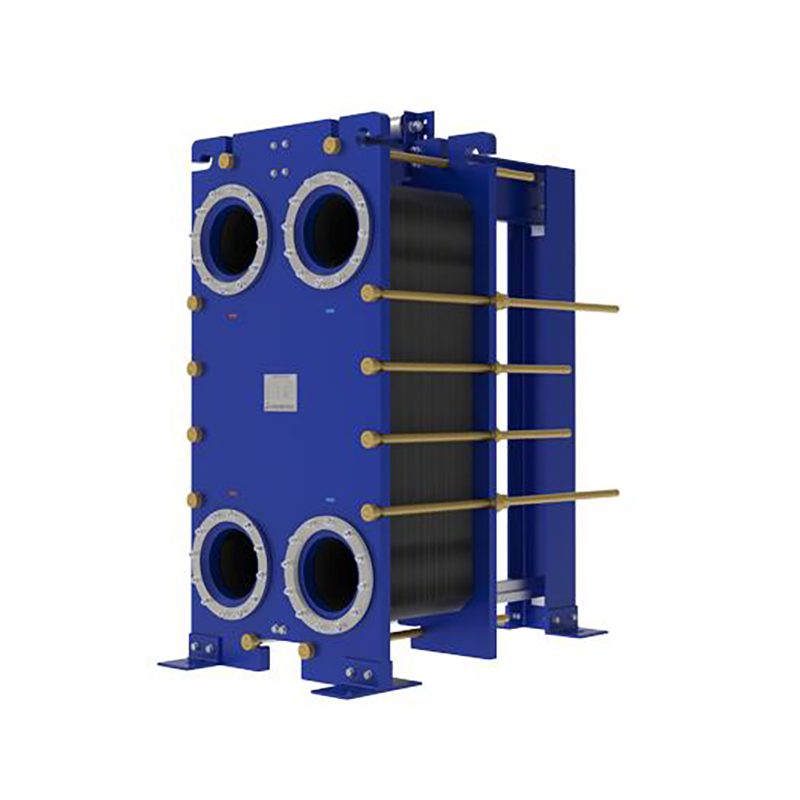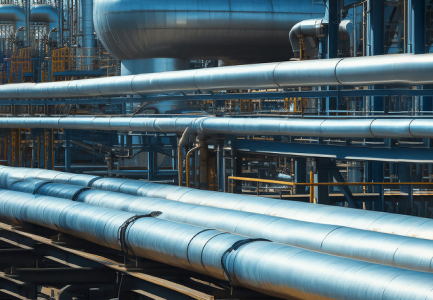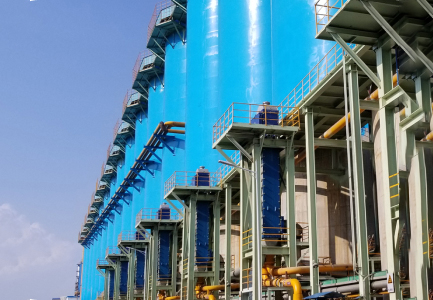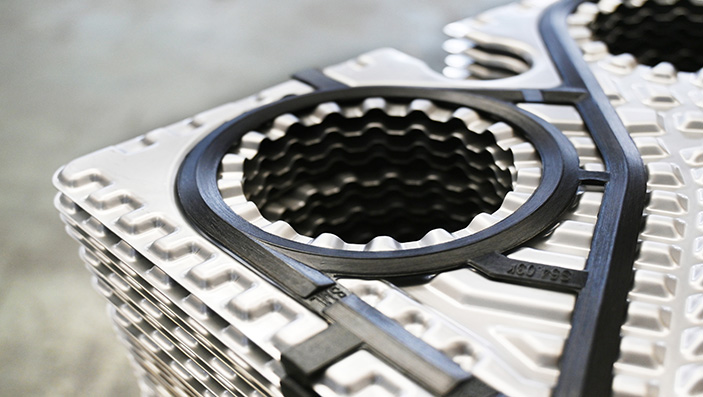
Products
Gasketed Plate Heat Exchanger
Certificates: ASME, NB, CE, BV, SGS etc.

The plate heat exchanger (PHE) was invented in 1923 by Dr. Richard Seligman, revolutionizing heat transfer efficiency. Initially used in the food industry, its compact design and high efficiency quickly gained popularity. Over decades, advancements in materials and manufacturing expanded its applications. Today, PHEs are vital in HVAC, chemical processing, power generation, and refrigeration. They excel in energy recovery, heating, cooling, and condensation processes. Modern PHEs feature enhanced durability, corrosion resistance, and adaptability to extreme temperatures and pressures. Their modular design allows easy maintenance and scalability, making them indispensable in industries prioritizing energy efficiency and sustainability, such as oil and gas, pharmaceuticals, and food and beverage.


In search of expert advice? Our experienced engineers stand ready to assist you. Discover more about our heat exchangers and compl-ementary services, all designed to precisely align with your needs.
contact us
Product Details
-

What is Gasketted Plate Heat Exchanger
Plate Heat Exchanger is composed of many heat exchange plates which are sealed by gaskets and tightened together by tie rods with locking nuts between frame plate. The medium runs into the path from the inlet and is distributed into flow channels between heat exchange plates. The two fluids flow countercurrent in the channel, the hot fluid transfers heat to the plate, and the plate transfers heat to the cold fluid on the other side. Therefore the hot fluid is cooled down and the cold fluid is warmed up.
Product Advantage
-
Compact & Modular Design
Surface-Area Density: Achieves 100–200 m²/m³ (vs. 20–50 m²/m³ for shell-and-tube), reducing footprint by 70–90%.
Scalability: Plates can be added/removed to adjust capacity without replacing the entire unit.Thermal Efficiency
Corrugated Plate Patterns: Herringbone, chevron, or washboard designs create turbulent flow, enhancing heat transfer coefficients (U-values of 3,000–7,000 W/m²·K for liquid-liquid applications).
Temperature Approach: Achieves temperature cross (hot outlet cooler than cold outlet) in counterflow configurations. -
Material & Construction Flexibility
Plates: Stainless steel (316L for general use), titanium (seawater/chloride resistance), Hastelloy (acidic environments)
Gasketted: Nitrile/EPDM/Viton gaskets for easy maintenance.Operational Versatility
Multi-Pass Configurations: Optimize for variable flow rates or temperature gradients.
Low Fouling: Smooth plates and CIP (Clean-in-Place) compatibility reduce downtime.
Product Parameters
| Parameter Item | Parameter |
|---|---|
| Max. Design Temperature | 180 ℃ |
| Max. Design Pressure | 36 Bar |
| Plate Thickness | 0.4 – 1.0 mm |
| Nozzle Size | Nozzle Size |
| Max. Area | 4000㎡ |
How to design and manufacture
Gasketted Plate Heat Exchanger
Design
- Process requirements analysis: Determine the heat transfer capacity, fluid flow rates, inlet and outlet temperatures, and pressure drop requirements based on the specific application.
- Plate selection: Choose the appropriate plate material, such as stainless steel, titanium, or nickel - based alloys, considering factors like corrosion resistance and thermal conductivity. Select the plate pattern and size to optimize heat transfer and fluid distribution. Common plate patterns include chevron - type and herringbone - type.
- Calculation of heat transfer area: Calculate the required heat transfer area using heat transfer equations and correlations, taking into account the overall heat transfer coefficient, logarithmic mean temperature difference, and heat load.
- Determination of flow arrangement: Decide on the flow arrangement, such as counter - flow or parallel - flow, to maximize the heat transfer efficiency. Also, determine the number of passes and channels for each fluid to achieve the desired flow velocity and pressure drop.
- Mechanical design: Design the frame, headers, and gaskets to ensure proper sealing and mechanical strength. Consider the operating pressure and temperature conditions to select suitable materials and design features.
Manufacture
- Plate manufacturing: The plates are usually formed by stamping or pressing metal sheets into the desired pattern. Then, they are welded or brazed together at the edges to form a sealed channel.
- Frame and header fabrication: The frame and headers are fabricated from suitable metals, such as carbon steel or stainless steel, using welding and machining processes. They are designed to support the plates and provide the necessary connections for the fluid inlets and outlets.
- Gasket installation: Gaskets are installed between the plates to ensure a leak - tight seal. The gaskets are made of elastomeric materials, such as nitrile rubber or ethylene - propylene - diene - monomer (EPDM), and are carefully placed in the gasket grooves on the plates.
- Assembly: The plates, frame, headers, and gaskets are assembled together to form the complete plate heat exchanger. The assembly process requires careful alignment and tightening of the bolts to ensure proper sealing and operation.
- 5.Testing: The manufactured plate heat exchanger is subjected to various tests, including pressure testing, leak testing, and heat transfer performance testing. These tests are carried out to ensure that the heat exchanger meets the design requirements and operates safely and efficiently.
Applications of Plate Heat Exchangers
Plate heat exchangers are widely used across industries due to their efficiency, compact design, and versatility. They play a critical role in applications such as HVAC systems, chemical processing, food and beverage production, and power generation. By reducing energy consumption and operational costs, plate heat exchangers significantly enhance industrial efficiency and sustainability, making them indispensable in modern industrial operations..
-
 Oil and GasIn the oil and gas industry, plate heat exchangers are used for cooling and heating various process fluids. They help in maintaining the optimal temperature of crude oil during transportation and refining. They also play a crucial role in heat recovery systems, improving the overall energy efficiency of the plants.
Oil and GasIn the oil and gas industry, plate heat exchangers are used for cooling and heating various process fluids. They help in maintaining the optimal temperature of crude oil during transportation and refining. They also play a crucial role in heat recovery systems, improving the overall energy efficiency of the plants. -
 MetallurgyIn metallurgy industry, plate heat exchangers are employed to cool hot metalworking fluids and gases. They help in maintaining the proper temperature of the cooling water used in steel mills and foundries, which is essential for the quality of the metal products and the efficiency of the production process.
MetallurgyIn metallurgy industry, plate heat exchangers are employed to cool hot metalworking fluids and gases. They help in maintaining the proper temperature of the cooling water used in steel mills and foundries, which is essential for the quality of the metal products and the efficiency of the production process. -
 FoodIn the food industry, plate heat exchangers are used for pasteurization, sterilization, and cooling of food products. They can quickly heat and cool liquids such as milk, juices, and sauces, ensuring the safety and quality of the food while minimizing the impact on its taste and nutritional value.
FoodIn the food industry, plate heat exchangers are used for pasteurization, sterilization, and cooling of food products. They can quickly heat and cool liquids such as milk, juices, and sauces, ensuring the safety and quality of the food while minimizing the impact on its taste and nutritional value. -
 Environmental ProtectionIn the environmental protection industry, plate heat exchangers are used in waste heat recovery systems and water treatment processes. They can recover heat from industrial waste gases and wastewater, which can be reused for other purposes, reducing energy consumption and environmental pollution.
Environmental ProtectionIn the environmental protection industry, plate heat exchangers are used in waste heat recovery systems and water treatment processes. They can recover heat from industrial waste gases and wastewater, which can be reused for other purposes, reducing energy consumption and environmental pollution.
Related articles
Read More
Leave Your Message
* Full Name
* Country/Region
* Email
* Company name
* Telephone Number
* Enter your needs

SHPHE has complete quality assurance system from design, manufacturing, inspection and delivery. It is certified with ISO9001, ISO14001, OHSAS18001 and hold ASME U Certificate.





